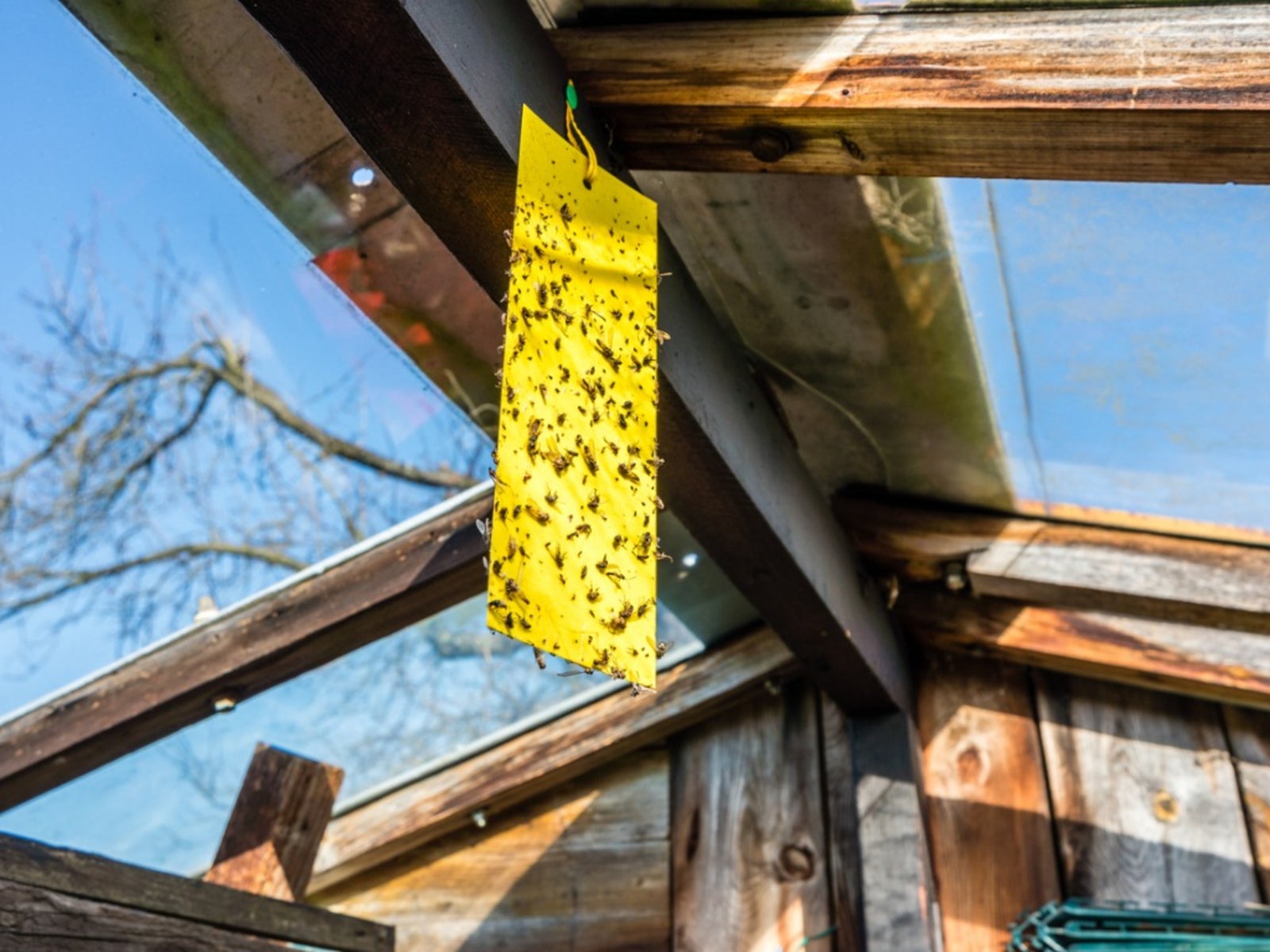Greenhouse Plant Pests: Managing Common Pests In A Greenhouse


Bugs and greenhouses go together like peanut butter and jelly - except not as delicious and not really as welcome. Pest management in greenhouses is vital to keeping your greenhouse plants healthy and happy, especially if you're sharing seedlings with friends or starting cuttings for your landscape. Greenhouse plant pests can't be totally avoided, but preventing greenhouse pest damage should be an important part of your greenhouse chores.
Common Pests in a Greenhouse
The most common pests in a greenhouse include sap-feeding insects, pollen feeders, caterpillars, and slugs. Some are considerably harder to control than others, making constant monitoring vital to successful greenhouse production.
Sap-feeding insects
Aphids, mealybugs, and scale insects are tiny, slow-moving sap-feeding insects that camp out in groups on the undersides of leaves and on stems deep within plant canopies. They exude a sticky substance, called honeydew, as they feed that sometimes coats plant tissues. Common signs of feeding include yellowing or distorted leaves and general unthriftiness in plants. Mites are nearly invisible arachnids that require magnification to properly identify. Mite damage resembles that of other sap feeders, but without the honeydew. Instead, mites may leave fine silk strands behind where they've been feeding in groups. Whiteflies aren't flies at all, but small, flying sap-suckers. These guys look like tiny, white moths but leave the same damage behind as other sap-feeders. They're poor fliers who take to their wings when disturbed but quickly settle back on feeding sites.
Pollen feeders
Thrips are small insects, no bigger than the tiniest ants. They're usually found feeding on flowers, spreading pollen all over the petals, and leaving black fecal specks and discarded exoskeletons behind. Small flies, like fungus gnats and shore flies, are common visitors to greenhouses. Adults are merely nuisances, but larvae may feed on the roots of plants that are chronically over-watered. Infested plants are unthrifty and flies will be observed hovering around their bases.
Caterpillars and slugs
Caterpillars and slugs are occasional, but serious, greenhouse pests. These defoliators are attracted to tender, succulent growth and consume young plants recklessly. The only signs of these pests may be foliage that's chewed from the outside in or skeletonized leaves.
Greenhouse Pest Control
If you're monitoring for small pests with sticky cards, you will know quickly when something isn't right in your greenhouse. Sticky cards placed on and near sensitive plants should be replaced weekly during the busy summer pest season. A surprising number of greenhouse pests can be killed with insecticidal soaps, including aphids, mealybugs, mites, whiteflies, and thrips. Liberally spray infested plants with insecticidal soaps, being sure to spray the undersides of leaves and coating stems well. Repeat treatments every five to seven days, or until the problem pests are gone. Scale insects need stronger control methods, but usually can be smothered with neem oil. Just like with insecticidal soap, apply neem weekly until the scale are all dead. You can use a thin-bladed knife or your fingernail to lift the protective coverings to spot check for dead scale. Tiny flies are easily dispatched with an application of Bacillus thuringiensis to the soil of affected plants. Adults won't disappear immediately, but these treatments will destroy the damaging larvae. Caterpillars and slugs are usually hand-picked and tossed into a bucket of soapy water. Check plants as well as the undersides of benches and any debris where they may be hiding. The sooner you can get them under control, the better. Caterpillars and slugs can cause serious damage in no time.
Sign up for the Gardening Know How newsletter today and receive a free copy of our e-book "How to Grow Delicious Tomatoes".

Kristi Waterworth was a regular contributor to Gardening Know How for many years, answering countless queries on plant pests and diseases.